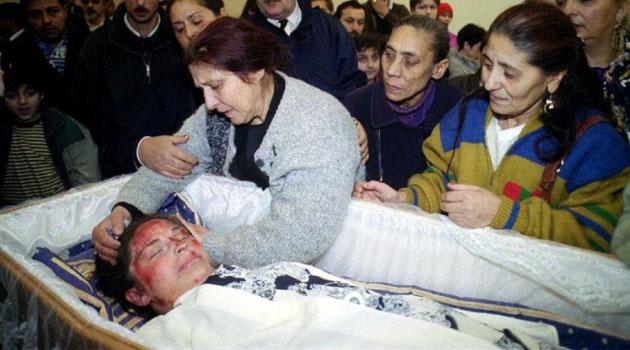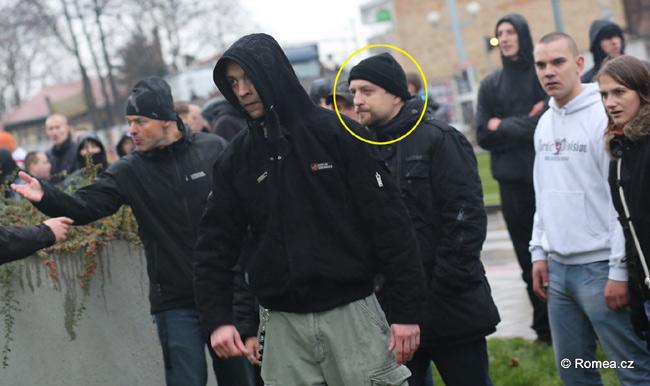Anniversary of the death of Helena Biháriová, one of the first victims of racial murder in post-1989 Czech Republic

The date of 15 February is a tragic anniversary of one of the series of murders of Romani people that appeared in Czech and Slovak society during the 1990s as a new phenomenon. In 1998 Helena Biháriová, a mother of four, was drowned in the flooded Elbe River after encountering two drunken youths from Klatovy, Petr Klazar and Jiří Neff, sympathizers of the skinheads movement who used physical and verbal aggression to drive her into the water.
Eliška Pilařová, a journalist, attempted to save Ms Biháriová, who did not know how to swim, after hearing her cries for help, but was unsuccessful. Ms Biháriová’s drowned body was not found until two days later.
Czech President Václav Havel gave Pilařová a medal for bravery for her efforts; she was hospitalized with hypothermia after her rescue attempt. The very first pogrom against Romani people in the newly democratic Czechoslovakia had taken place just two years after the 1989 Velvet Revolution in the town of Libkov (Klatovy district).
After three days of scuffles in which he was harmed, a 22-year-old man died. Emil Bendík, a resident of Klatovy, was beaten so brutally on 23 February 1991 that he died two days later as a result of his injuries.
Not long before that murderous assault, Bendík’s grandfather, Bartoloměj Jano, received a threatening letter signed by the Ku Klux Klan. A group of 28 assailants was then charged with battery, disorderly conduct, property damage and trespassing, some of whom got away with suspended sentences.
On 24 September 1993, a 17-year-old Romani boy, Tibor Danihel, died as a result of racially motivated murder. Skinheads from České Budějovice to Příbram had gathered in Písek with the apparent intention of “hunting” Romani people.
After marching through the town, they found their victims on an island in the river, three Romani boys who jumped into the water in panic. The non-Romani youths occupied both banks of the river and, shouting fighting slogans, did not let their victims out of the water for a very long time until Mr Danihel definitively lost his strength and died.
The Czech justice system, in the words of Písek District Prosecutor Sigmund, understood the group’s actions do have been a “crazy prank”. The case of Helena Biháriová is, along with several others, another bitter testament to the toothlessness of the justice system after 1989, which did not know how to adequately “cope” with racially motivated murders.
Ms Biháriová’s case remains legally qualified as just involving the crimes of extortion resulting in death and rioting, unlike the case of Mr Danihel, whose demise was ultimately qualified by the Czech courts as murder (albeit after a disproportionately long time) thanks to enormous efforts made by the activists involved. Despite the fact that the perpetrators in Ms Biháriová’s case had criminal pasts, previous convictions arising from conflicts with Romani people, and psychologists confirmed their actions were racially motivated, the court did not find that enough evidence of racial motivation.
Klazar was convicted of rioting and sentenced to 15 months in prison, while Neff was convicted of extortion resulting in death and sentenced to eight and a half years in prison. As is the custom in Czech society, rumors then began to spread about the allegedly flawed moral profile of the victim – she was rumored to have provided sexual services, her children were said to have been taken away by the state as infants, her common-law husband allegedly had problems with gambling, etc.
The notion that the victim had not lived a “proper” life seemed to justify the assault itself – many were satisfied by these groundless rumors and believed that her death meant there was just “one less criminal” around. Some in Czech society behaved the same way after the murder of Tibor Danihel, when rumors began to spread that the victim had drowned himself after huffing toluene.
“The basic message that the court in Karviná sent to Romani people back then still applies: You cannot be certain of justice in this country. You can always find a police detective, a state prosecutor, and then a judge who will all be willing, in all good conscience, to consider the brutal murder of a young woman in icy rapids to have been an unfortunate accident,” journalist Jindřich Šídlo wrote in a commentary for the weekly RESPEKT in response to the verdicts that were handed down in the cases of the murders of Ms Biháriová, Mr Danihel, and Mr Milan Lacko.
One of the few people who was convinced from the beginning that Ms Biháriová’s case was one of racially-motivated murder was the newly-appointed minister without portfolio, Vladimír Mlynář. Roughly 200 people assembled on the Old Town Square in Prague on the day of her burial to express their opposition to racism, and the Social Academy established a bank account for the financial support of her four surviving children.
